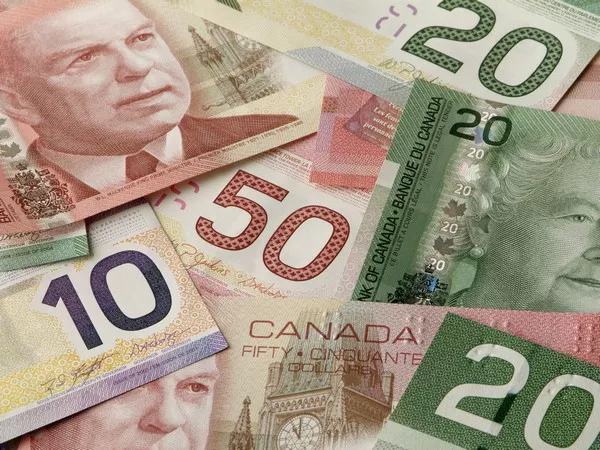As economies face inevitable cycles of expansion and contraction, understanding the impact on currencies is crucial for investors, policymakers, and individuals alike. In this comprehensive exploration, we delve into the intricacies of what happens to the Canadian Dollar (CAD) during a recession. From economic indicators to government policies, we’ll dissect the factors influencing the Canadian Dollar’s performance in times of economic downturn.
Economic Indicators and the Canadian Dollar:
1. GDP Contractions:
In a recession, one of the primary indicators affecting the Canadian Dollar is the contraction in Gross Domestic Product (GDP). As economic output diminishes, investor confidence wavers, leading to a potential depreciation of the Canadian Dollar. Economic contraction signals reduced demand for Canadian exports, impacting the nation’s overall trade balance.
2. Interest Rates:
Central banks, including the Bank of Canada, often respond to economic downturns by lowering interest rates. While lower interest rates can stimulate borrowing and spending, they may also result in a weakened Canadian Dollar. Investors may seek higher returns in other currencies with more attractive interest rates, leading to capital outflows from Canada.
3. Commodity Prices:
Canada is a major exporter of commodities, including oil and minerals. During a recession, the demand for commodities tends to decrease, impacting their prices. Given Canada’s reliance on commodity exports, a decline in prices can contribute to a weakened Canadian Dollar. Oil prices, in particular, play a significant role due to Canada’s substantial oil exports.
4. Trade Balance:
The trade balance, representing the difference between exports and imports, is a key determinant of a currency’s strength. In a recession, reduced global demand affects Canadian exports, potentially leading to a trade deficit. A negative trade balance can exert downward pressure on the Canadian Dollar.
Government Policies and Interventions:
1. Fiscal Policy:
During a recession, governments often implement expansionary fiscal policies to stimulate economic activity. Increased government spending or tax cuts aims to boost demand and counteract the economic downturn. While these measures may support the economy, they can also result in higher government debt, influencing investor perception of the Canadian Dollar.
2. Monetary Policy:
Central banks, including the Bank of Canada, employ monetary policy tools to navigate recessions. Lowering interest rates is a common strategy to encourage borrowing and spending. However, excessive monetary stimulus can lead to concerns about inflation and currency devaluation, impacting the Canadian Dollar’s exchange rate.
3. Quantitative Easing:
In extraordinary circumstances, central banks may resort to quantitative easing (QE), wherein they purchase financial assets to inject liquidity into the economy. While QE aims to support credit markets, it can also contribute to currency depreciation. Investors may seek assets in other currencies perceived as more stable.
4. Currency Interventions:
Governments may engage in currency interventions to stabilize or influence the exchange rate of their currency. While these interventions are relatively rare in Canada, policymakers may take measures to prevent excessive volatility in the Canadian Dollar during a recession.
See Also: 6 Factors Behind the Resilience of the Canadian Dollar
Investor Sentiment and Safe-Haven Assets:
1. Flight to Safety:
During times of economic uncertainty, investors often seek safe-haven assets to preserve capital. Currencies considered safe havens, such as the US Dollar, may attract capital inflows, leading to relative weakness in the Canadian Dollar. The perception of the Canadian Dollar as a commodity currency can also influence investor sentiment.
2. Global Risk Appetite:
The Canadian Dollar’s performance is intricately tied to global risk sentiment. In a recession, risk aversion may lead to a reduction in global trade and investment, impacting the Canadian Dollar. Conversely, improvements in global economic outlook can positively influence the currency.
Canadian Dollar Performance in Past Recessions:
1. 2008 Global Financial Crisis:
During the 2008 financial crisis, the Canadian Dollar experienced significant volatility. Initially, the currency depreciated as commodity prices fell, affecting Canada’s terms of trade. However, as the global economy stabilized, the Canadian Dollar rebounded, aided by a resilient banking sector and stronger economic fundamentals.
2. COVID-19 Pandemic:
The COVID-19 pandemic presented unique challenges to the global economy. Initially, the Canadian Dollar faced headwinds due to falling oil prices and widespread economic uncertainty. Subsequent government interventions and a rebound in commodity prices contributed to the currency’s recovery.
Strategic Considerations for Investors:
1. Diversification:
Diversifying currency exposure is a prudent strategy for investors, especially during economic downturns. Holding a mix of currencies, including those traditionally considered safe havens, can mitigate risks associated with currency depreciation.
2. Monitoring Economic Indicators:
Keeping a close eye on key economic indicators, such as GDP growth, trade balances, and commodity prices, provides valuable insights into the Canadian Dollar’s potential trajectory. Informed decision-making requires a comprehensive understanding of economic fundamentals.
3. Risk Management:
Employing effective risk management strategies is crucial for investors navigating currency markets during recessions. This may include setting clear risk tolerance levels, implementing stop-loss orders, and staying attuned to market sentiment.
4. Long-Term Perspective:
While economic downturns can lead to short-term currency fluctuations, maintaining a long-term investment perspective is essential. Canada’s economic resilience and its history of recovery from recessions underscore the importance of a patient and strategic approach.
Conclusion:
In navigating the complex landscape of a recession, the fate of the Canadian Dollar is shaped by a myriad of factors, including economic indicators, government policies, and global investor sentiment. Understanding these dynamics equips investors and policymakers with the insights needed to make informed decisions during challenging economic times.
The Canadian Dollar’s performance in a recession reflects the nation’s economic resilience and its ability to adapt to changing global circumstances. As investors and observers, acknowledging the interconnectedness of economic variables and staying informed about policy responses are key elements in effectively interpreting and responding to the Canadian Dollar’s movements during economic downturns.


